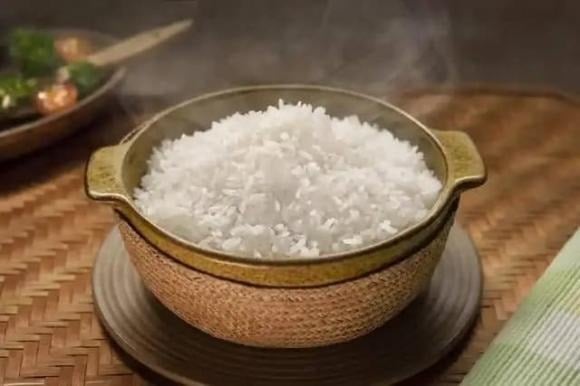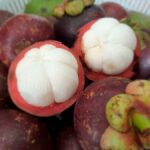Many people mistakenly believe that the main cause of diabetes is excessive sugar consumption. However, in reality, this disease is closely linked to diet, especially the staple foods we consume daily. This is one of the critical factors directly affecting blood sugar levels.
So, what are some seemingly healthy staple foods that could potentially spike blood glucose levels?
Through clinical examinations, I’ve noticed a common thread among diabetic patients – they often have unhealthy staple food habits.
Controlling blood sugar is not just about cutting down on sweets. It’s about making the right choices with staple foods to prevent blood sugar spikes. So, what are some staple foods that can push blood glucose levels dangerously high?
White Rice – The “Hidden Sugar” for Diabetics
White rice is often perceived as a healthy, easily digestible staple food, sometimes even considered a “snack” with minimal impact on the body. However, the reality is quite different. White rice has a glycemic index (GI) of 83, which is remarkably high. When consumed, white rice quickly breaks down and gets absorbed, causing a sharp spike in blood sugar levels over a short period.
For diabetics, white rice acts like “invisible sugar.” Despite its lack of sweetness, it can impact blood glucose levels more significantly than many sugary drinks.
A diabetic patient shared that he avoided snacks and sugary drinks but regularly consumed two bowls of white rice per meal to feel satisfied. Consequently, while his fasting blood sugar levels were stable, his post-meal readings frequently soared, sometimes exceeding 13 mmol/L.
After consulting his doctor, he reduced his white rice intake and replaced it with whole-grain alternatives like brown rice, oatmeal, or buckwheat. As a result, his blood sugar levels gradually stabilized.
Research indicates that individuals who regularly consume high-GI foods are 1.5 times more likely to develop diabetes than those maintaining a low-GI diet. High-GI foods stimulate excessive insulin production, straining the pancreas and impairing blood sugar control.

Excessive white rice consumption can lead not only to elevated blood sugar but also to insulin resistance, a primary risk factor for diabetes.
Therefore, instead of merely reducing starch intake, diabetics should opt for whole-grain, low-GI alternatives to effectively manage their blood sugar levels.
Refined Noodles – The Unsuspected Culprit Behind Blood Sugar Spikes
Noodles are often considered easier to digest than rice, especially for the elderly with weaker teeth. However, for diabetics, refined noodles can impact blood sugar levels even more significantly than white rice.
During processing, refined noodles are stripped of most of their fiber content. As a result, they are rapidly digested and absorbed, causing a quick surge in blood glucose levels.
One diabetic patient experienced loss of appetite, so his family often cooked noodles to ensure he got some nourishment. Unfortunately, after a few months, his hemoglobin A1C levels had significantly increased.

Upon analyzing his diet, the doctor discovered that refined noodles caused a more rapid increase in blood sugar than initially thought. By consuming large amounts of noodles, the patient had unintentionally caused his blood sugar levels to rise without realizing it.
Studies indicate that the GI of refined noodles ranges from 70 to 85, similar to or even higher than white rice. Additionally, overcooking noodles can further accelerate glucose absorption, leading to post-meal blood sugar spikes.
If you enjoy noodles, opt for low-GI varieties like whole wheat or buckwheat noodles. Also, combine them with protein and green vegetables to slow digestion and better manage blood sugar levels. This not only reduces blood sugar fluctuations but also promotes a prolonged feeling of fullness, preventing sudden blood glucose spikes.
Potato Starch – A Hidden Danger for Diabetics
Many people view potatoes, sweet potatoes, and taros as natural, healthy alternatives to refined foods, sometimes even replacing rice with these starchy vegetables in their daily meals.
However, potatoes have a high starch content and a GI of 85, which is even higher than white rice. When consumed, the starch in potatoes quickly converts to glucose, causing a rapid increase in blood sugar levels.
One diabetic patient, after being diagnosed, decided to reduce his rice intake and replace it with potatoes and sweet potatoes, hoping to ease the burden on his blood sugar levels. Unfortunately, after a few months, his blood glucose levels had risen instead of decreased, leaving him confused and concerned.
The doctor explained that potatoes, with their high GI, could cause more significant blood sugar fluctuations than rice. Research also shows that cooking potatoes alters their starch structure, making them easier for the body to digest and absorb, resulting in elevated blood glucose levels.
Additionally, certain cooking methods, such as mashing, deep-frying, or overcooking, can significantly increase the GI of potatoes, leading to more pronounced blood sugar spikes.
If you wish to include potatoes in your diet, opt for sensible preparation methods. For instance, cut them into small pieces and let them cool before consumption. This allows some of the starch to convert to resistant starch, slowing absorption and reducing blood sugar spikes.
However, diabetics should still monitor their potato starch intake and not rely solely on these starchy vegetables as their staple food.
Buns and Steamed Bread – A Surprise Risk for Elevated Blood Sugar
Buns and steamed bread are often considered traditional, bland, and soft foods that shouldn’t significantly affect blood sugar levels.
However, these refined flour-based foods can cause blood glucose spikes faster than white rice. When consumed, they quickly convert to glucose, leading to sudden increases in blood sugar levels.
Doctors note that steamed bread, especially when leavened, has a more easily digestible starch structure, causing faster blood sugar spikes than white rice.
Research reveals that the GI of white flour buns can reach 85, far higher than that of rice or refined noodles. Regular consumption of these buns by diabetics can lead to significant blood glucose fluctuations and increase the risk of complications.
If you wish to include buns in your diet, opt for those made from whole wheat flour or add whole grains like oatmeal or buckwheat to reduce the blood sugar spike.
Staple Foods That Can Lead to Uncontrolled Blood Sugar
The four staple foods – white rice, refined noodles, potato starch, and steamed buns – can rapidly increase blood glucose levels and contribute to uncontrolled blood sugar in diabetics. Prolonged consumption of these foods can exacerbate insulin resistance and increase the risk of developing diabetes.
To better manage blood sugar levels, consider replacing high-GI foods with low-GI alternatives like brown rice, whole-grain noodles, oatmeal, or buckwheat. Additionally, pay attention to food preparation methods and combine foods wisely to stabilize blood glucose levels and protect pancreatic function.
Controlling blood sugar involves more than just limiting sweets; it’s about making wise choices with staple foods to maintain stable blood glucose levels.
“Unlocking Six Sensational Health Benefits: The Magic of Guava Leaf Tea”
“Hibiscus sabdariffa, more commonly known as roselle or sorrel, is a vibrant, tropical plant that boasts an array of health benefits. The calyces of the plant are used to create a nutritious drink, packed with antioxidants and vitamins, offering a natural way to boost your overall health and well-being. This natural remedy has been used for generations and is renowned for its ability to prevent and treat various ailments effectively and naturally.”



































